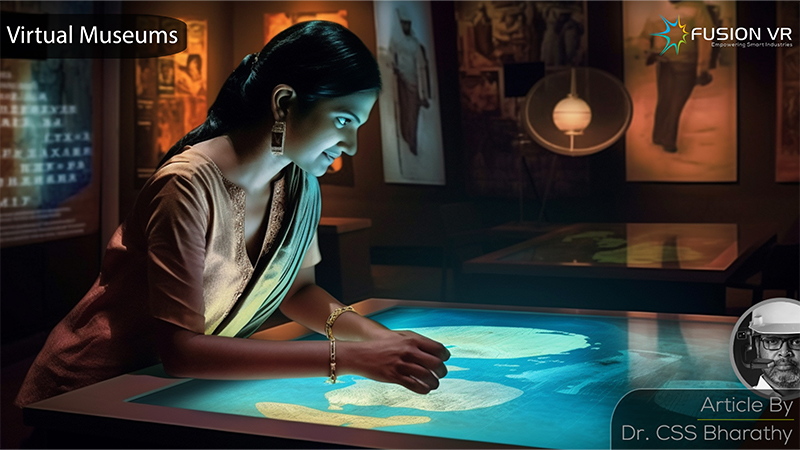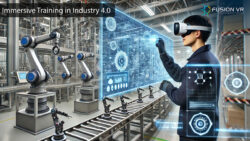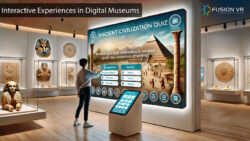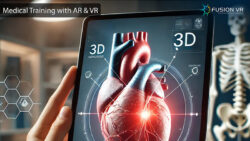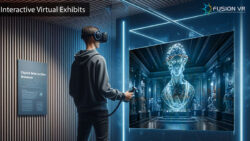Virtual museums are digital online sites that are developed for people to have a virtual visit to a museum and explore its collections and exhibits from the comfort of their homes. There is no need to visit the museum in person. The growth of digital, computing and telecommunication technologies has enabled a fulfilling experience for people visiting digital museums. The experience of visiting a digital museum replicates the feeling of visiting an actual museum.
The user would be walking through an entrance and having the ability to navigate to its various sections and collections. The potential of a digital museum is immense and aims to provide a more comprehensive visitor experience than what a conventional museum would be able to offer. The virtual experience in most museums offers both 2D virtual tours and a true VR museum experience.
Sitting here in India, how many of us can travel to the Louvre in Paris and spend a week enjoying the various collections there, which include Leonardo Da Vinci’s Mona Lisa. The cost of travel and lodging could be prohibitive for most of us, depriving us of a wonderful experience that allows for learning and appreciation of art from various masters, present and past.
Virtual museums have now filled this void with major physical museums creating their own portals for visitors across the globe to visit and enrich themselves with an equivalent experience of an actual visit. As Thomas Friedman wrote, technology has made the world flat, enabling experiences that most people could not dream of half a century ago.
Experience the World’s Greatest Museums From Home
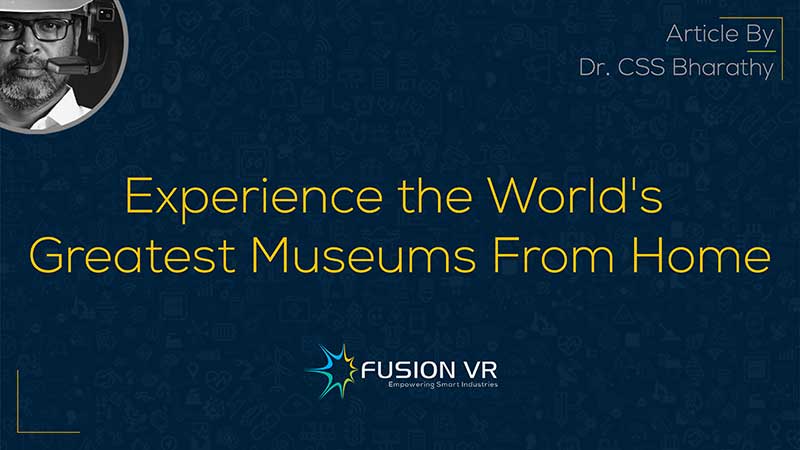
The Louvre happens to be one of the most visited museums in the world. Nearly 8 million visitors entered its doors last year. Apart from the Mona Lisa, it houses the statue of Venus de Milo, the Sphinx of Tanis etc. The Louvre also provides a virtual 360-degree tour which presents the opportunity to explore the various collections and galleries.
A special VR application called ‘Mona Lisa: Beyond the Glass’ – is the Louvre’s first virtual reality project. It employs the latest scientific and artistic research on Leonardo da Vinci and brings the ordinary viewer accurate information on his creative approach, processes and artistic skills. While a physical visit to the Louvre would not provide a view of the Mona Lisa through its glass, the VR experience is more wholesome and enriching to everyone.
The Smithsonian National Museum of Natural History in Washington D.C. is another of the world’s greatest museums that offer virtual tours of its collections. These are self-guided, room-by-room tours of current, past and permanent exhibits of the museum. The visit to the Rotunda and the view of the huge African bush elephant with its long white tusks is a sight to behold.
As you enter these virtual tours, look for the VR headset icon that allows a real VR tour using a VR headset or WebVR-capable browser. This allows for a great immersive experience that rivals the satisfaction of a real physical experience. One of the lesser-known advantages for all of us is learning what the museum is about before making a physical visit. It enables better planning and the most effective and optimal use of time to be spent there.
The Salar Jung Museum in Hyderabad also has virtual galleries for the various collections accumulated by the museum’s founder. This includes the Veiled Rebecca, Porcelain, Japanese, European, Chinese, and Ivory galleries. Knowing what collections are there in such museums is a big tip which helps people focus on the places where they wish to spend the most time.
In addition to this famous museum, the Indian Museum and the Victoria Memorial Hall in Kolkata and the National Museum in New Delhi host virtual tours that bring to your fingertips the vast cultural and historical treasures of the country.
When the COVID-19 pandemic struck, people were forced to stay home due to the widespread lockdowns. The only way to explore and engage with the world was through the internet. Museum attendances disappeared overnight, and the resources there needed to be put to better use as well, rather than face layoffs. Fortunately, digital technologies were quite advanced to enable seamless virtual experiences for people stuck at home.
The Advantages and Challenges of Virtual Museums in Today’s World
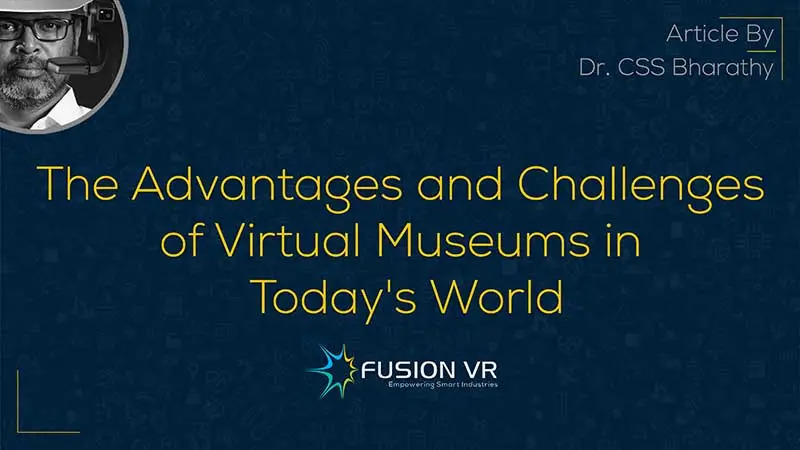
The great advances in virtual reality technology, which were led by the gaming industry, made VR headsets more affordable and available to many communities across the world. While the business world came up with innovative ways to connect and engage personnel due to the strict travel restrictions imposed by governments, it also enabled its uses for various other sectors of human activity. Interactive museums have been one of the beneficiaries of the explosion of user-friendly and affordable technologies.
The beauty of virtual reality technology lies in its ability to provide a fully immersive experience. Users who don a VR headset may not even realise that they feel transported or teleported to a completely new environment. This environment could be digitally created or captured with the use of 3D cameras, as in the case of museums.
Visitors could lose themselves in these environments as they navigate in all directions just as they can and would in the real world. Traversing through a museum in virtual reality is super easy. Stopping by a painting and activating a command to hear a voiceover from a museum expert is the same as receiving it from a physical guide.
While the advantages of virtual museums are plenty, the challenges of building and maintaining such exhibits, ensuring their 24 x 7 availability to users across the world, is not a simple undertaking. An army of technical and creative experts to support the museum is required. The content and the supporting information that is both relevant and interesting need to be created, captured and integrated into the virtual tours.
The content may need to be customised to the various users and their preferences as well. The overall VR experience centre has to be made intuitive and highly user-friendly. It should avoid discomfort and issues such as headaches, nausea, dizziness, eye strain etc. Both technical and creative professionals need to collaborate and design the best user interface (UI) and user experience (UX) possible.
While this is an area of growing interest, the availability of virtual museum solution providers with many years of experience and good projects under their belt is not much. This is particularly the case in India, as VR adoption across various sectors is just catching up. An effectively designed virtual museum or corporate experience centre requires the collaboration of technical, creative and subject matter experts with rich domain experience.
While the level of interest is high, these need to grow into purposeful enquiries and awards of projects. Solution providers need to design, engineer, construct and install the infrastructure and solutions needed. They also need to be engaged to maintain these facilities.
Fusion VR has been a leader in virtual and augmented reality technologies and a pioneer in the virtual museum space in India. The Amma Museum and Knowledge Park in Chennai and RKM museums across the country showcase the technical and project capabilities of our organisation.
We encourage everyone and anyone with curiosity or those with academic, technical or commercial interests to explore our website. More than just solution providers, Fusion VR wants to evangelise the adoption of virtual museums and corporate experience centres in India and elsewhere for the multiple benefits it brings to society.
The deployment and use of Industry 4.0 technologies in museums will open the doorway for the eventual integration of virtual museums into the metaverse. That is the future of a more connected experience for everyone. Virtual museums are here to stay, and it is expected that more and more physical museums will begin to offer virtual tours to attract more visitors to see and appreciate their collections.

